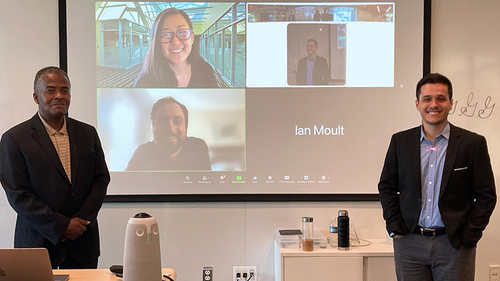
On July 26, 2022, Ako Jamil successfully defended the thesis: “Rare Event Searches in Liquid Xenon with EXO-200 and nEXO” (advisor: David Moore).
Jamil explained: “The neutrino is the most abundant massive particle in the universe and yet we still know very little about its properties. The Standard Model of Particle Physics assumes that neutrinos are massless and yet the definitive observation of neutrino oscillations shows that neutrinos must have a non-zero mass. However, its mass is very small and about six orders of magnitude smaller than the next lightest particle, the electron. Understanding the reason for the smallness of the neutrino masses as well as the observed matter-anti-matter asymmetry in the universe is the motivation to search for a hypothesized rare nuclear decay which is the neutrinoless double beta decay. If observed, it would show that neutrinos are their own anti-particles and would provide some of the key ingredients for getting a better understanding of the nature of neutrinos and possible answers to the above questions. nEXO is a tonne-scale liquid xenon based experiments searching for the neutrinoless double beta decay of Xe-136 with a half-life sensitivity as long as 10^28 years. Understanding the light and charge response of liquid xenon to ionizing radiation is key for maximizing the physics reach of the experiment.”
Jamil will be joining the Princeton Physics Department as a Robert H. Dicke Fellow to work on DarkSide-20k, which is an upcoming multi-tonne liquid argon dark matter experiment.
Thesis Abstract: